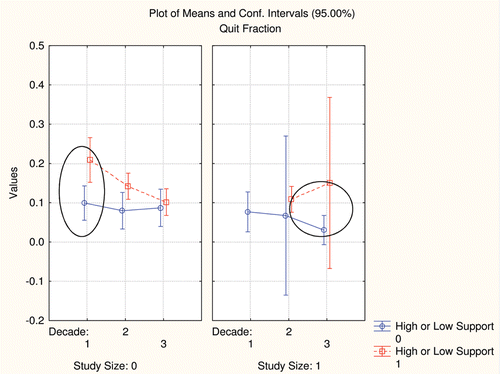Figures & data
Table 1. List of data sets used for meta-analysis.
Table 2. List of additional or excluded treatment and control data sets.
Table 3. Estimates of treatment effects on cessation rates, overall as well as stratified by type of NRT, type of cigarette, study duration, type of abstinence, level of support, study decade, study size, study quality, as well as combined strata, regarding type of cigarette and type of abstinence.
Table 4. Effect estimates and 95% CI based on the main effects model in control and treatment group data. Effect estimates of the interaction model are given for the control group data on the right half, indicating the scope of applications of estimates (population restrictions), according to the interaction structure of the model. In the effect column, the exposure category is mentioned.
Figure 1. In small studies (left panel), studies with high support resulted in increased levels of smoking cessation as compared to studies with low support in decade 1. The difference in smoking cessation rates as a function of support declined in the 1990s (decade 2) and 2000s (decade 3). In large studies (right panel), there was a significant effect of high support in studies conducted in the 2000s but not in studies conducted in the 1990s.

